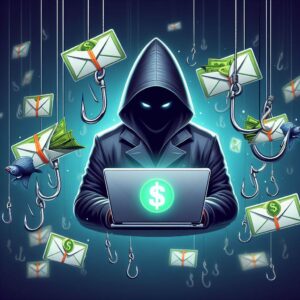Don’t Engage: First and foremost, do not engage with the suspicious email or click on any links or download any attachments. This can help prevent further damage or exposure.
Verify the Email: Make sure the email is indeed suspicious. Sometimes, legitimate emails can look suspicious due to formatting issues or other factors. Double-check the sender’s address, grammar, and any unusual requests in the email.
Contact Your IT Department or Service Provider: If you’re at work or using a company email account, contact your IT department or service provider immediately. They may have specific protocols for reporting phishing attempts.
Use Built-in Reporting Tools: Most email services and clients offer built-in tools for reporting phishing. For example, Gmail has a “Report phishing” option, and Outlook has a “Report as phishing” option. Use these features to alert your email provider.
Forward the Email: If there are no built-in reporting options or if the email is not in your work inbox, you can forward the suspicious email to your IT department or your email provider’s abuse team.
Report to Anti-Phishing Organizations: You can report phishing attempts to organizations like the Anti-Phishing Working Group (APWG) and the Anti-Phishing.org. They track and combat phishing attempts.
File a Complaint with Government Authorities: In many countries, you can report phishing attempts to your local law enforcement or to a cybercrime reporting agency. For example, in the United States, you can file a complaint with the FBI’s Internet Crime Complaint Center (IC3) or with the Federal Trade Commission (FTC).
Notify Your Bank and Credit Card Companies: If the phishing attempt was related to financial information, contact your bank and credit card companies to alert them to the situation and take any necessary actions to protect your accounts.
Report to Anti-Spam Organizations: You can also report phishing attempts to anti-spam organizations like SpamCop or your email provider’s spam reporting service. This helps them identify and block phishing sources.
Educate Others: Inform your friends, family, and colleagues about the phishing attempt, especially if it came from a known contact. This can help prevent others from falling victim to similar scams.
Regularly Update Your Antivirus and Anti-Malware Software: Ensure your antivirus and anti-malware software is up to date and capable of detecting and preventing phishing attempts.














5 comments